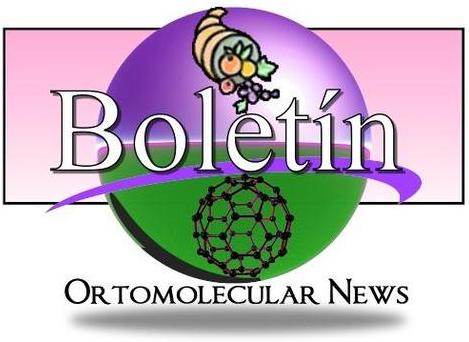Orthomolecular Psychiatry in Theory and Practice by Abram Hoffer, MD, PhD Drug Therapy, Aug. 1977
Dr. Hoffer is affiliated with the Huxley Institute for Biosocial Research, and is Editor-in-Chief, Journal of Orthomolecular Psychiatry Orthomolecular psychiatry is one of two branches of psychiatry currently advocating chemotherapy for schizophrenia. The other branch is toximolecular psychiatry. There are vast conceptual differences between the two and great differences in efficacy for the patient. Toximolecular psychiatry advocates the use of sublethal doses of agents not normally found in the body. Their use has not significantly improved patient recovery rate over that occurring naturally, and demands a terrible price from the patient in the form of incapacity to work and irreversible toxicity. Single drugs are used for treating schizophrenics unless additional drugs are needed to control side effects. In this approach, a drug is promoted and required for patient maintenance. Modern psychiatry generally depends on this system of drug use.
Orthomolecular psychiatry, on the other hand, emphasizes a system of treatment, not any one drug or chemical. The schizophrenic is given optimal amounts of materials that are necessary for good nutrition and optimal functioning - vitamins, minerals, fats, carbohydrates, and amino acids. The orthomolecular program requires full patient participation in changing lifestyle and discontinuing faulty eating habits. Thus, sound principles of good nutrition are inherent in the program, and they include adhering to a diet that provides high nutritional value for the individual and avoiding foods to which one is allergic. In many cases, megadoses of the essential factors are required, and patients are eventually maintained in a normal state by nutritional therapy alone. Such patients relapse much less frequently than those maintained on drugs alone.
Orthomolecular Treatment -- In Theory
Effective treatments are not any more effective because one understands why they work. Frequently there is no correlation between rationale and effectiveness. Physicians are more likely to accept a treatment when there is an explanation, even if it is erroneous. For this reason, I consider rationale something to be sought after, but a factor not nearly as relevant as proof of efficacy.
The propositions basic to orthomolecular psychiatry are as follows: - When the brain is biochemically disorganized, so is the mind.
- There is great interindividual variation in biochemical needs and metabolic processes.
- Some nutrient requirements, especially those for vitamins, may vary up to 100-fold between individuals.
Persons who remain well on average levels of needed nutrients may develop problems if their diets become deficient or they are unable to absorb the nutrients. Others who need larger amounts will develop a dependency and require supplementation. - Deficiency disease can result from lack of, or dependency on, a particular nutrient. For example, vitamin B3-deficient patients develop pellagra. But those who are deficient because they require larger levels of vitamin B3 are actually vitamin dependent and, in my opinion, constitute a major proportion of acute or subacute schizophrenics. Prolonged malnutrition, as occurred in World War II concentration camps in the Far East, will produce dependency. Dependency may develop any time in life. - Both the biophysical (food, air, water, etc.) and psychosocial environments are important. A normal biophysical environment ensures a nomal interaction with the psychosocial environment. - A number of schizophrenic syndromes are caused by different biochemical problems, each requiring a specific treatment. Tranquilizers, like sedatives, are nonspecific. They will allow some control of symptoms for all the schizophrenias, but do not help in determining cause. Obviously, no schizophrenic suffers from a deficiency of any tranquilizer.
Orthomolecular Treatment -- In Practice
In general, the "medical model" of orthomolecular psychiatry is the basis for diagnosis and treatment. The prognosis is also discussed in earlier articles.
Nutrition
In nature, food does not exist as the proteins, amino acids, fats, carbohydrates, vitamins, and minerals described by chemists. Food is a complex of living material. When digested, the basic nutritional components in food are released. The most nutritionally valuable foods are the least processed ones. Unfortunately, 80% of the food consumed today is processed. "Nonfoods" have been stripped of all essential nutrients. To be metabolized, they must "steal" accessory nutrients - proteins, fat, vitamins, and minerals -from other foods. That is why substances containing "empty calories" are so injurious to the quality of any diet to which they are added.
Such depleted substances are best looked upon as ~junk" and avoided. Therefore, the first rule of nutritional (i.e., orthomolecular) therapy is: Eat no "junk" food to which sugar has been added. This rule excludes from the diet pastry, candy, chocolate bars, soft drinks, ice cream, and processed cereals. Most people will eventually lose the craving for sugar. Adherence to a nodunk food diet ensures that more nutritionally valuable food (fresh fruit, vegetables, fish, meat, etc.) is eaten, constituting a better diet overall.
The second rule is: Avoid foods to which one is allergic. This includes avoiding foods of which one is inordinately fond (craving may be fueled by allergy) or from which one obviously becomes sick. The third rule is designed to minimize allergic reactions: Eat as wide a variety of foods as possible and do not depend heavily on a few.
The Light Party.
|


